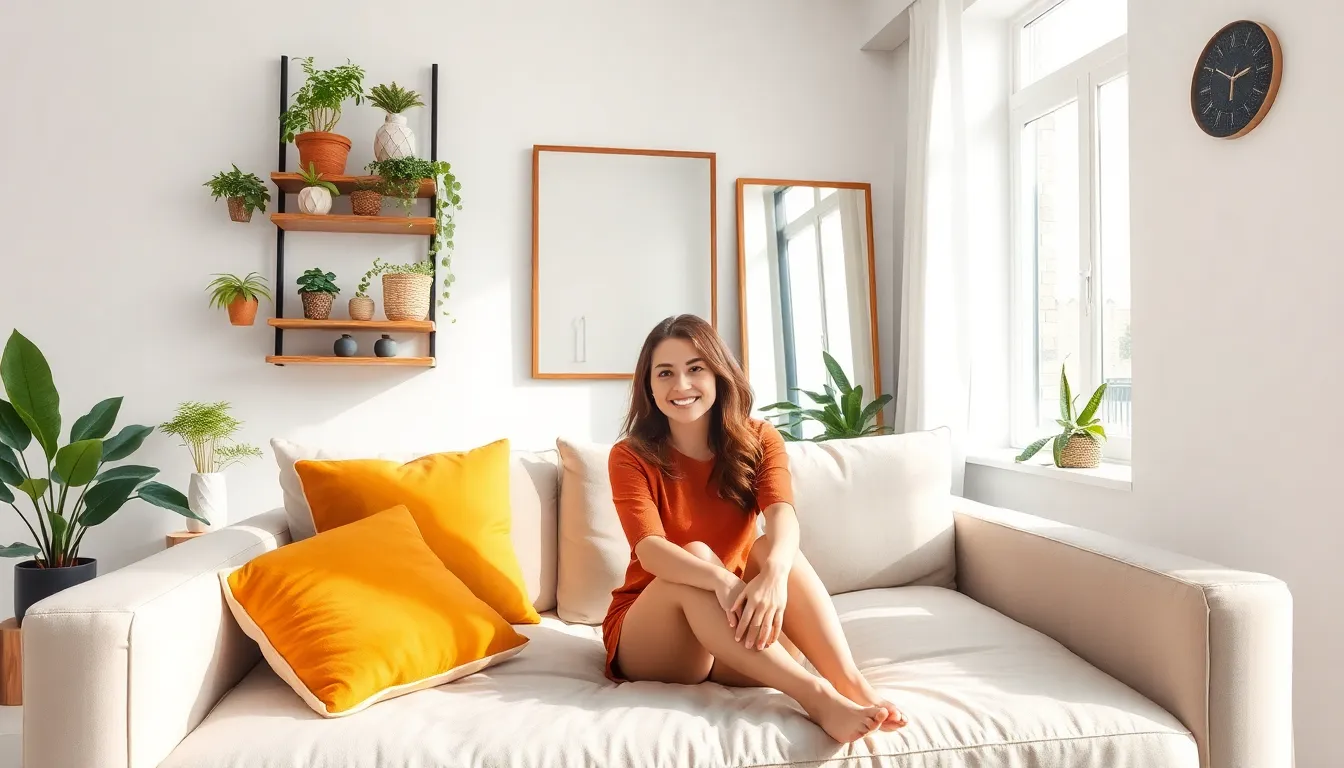In a world where bigger often seems better, small spaces can feel like the underdog in the design game. But don’t let their size fool you; these cozy nooks are brimming with potential. With the right approach, even the tiniest apartment can be transformed into a stylish sanctuary that rivals any sprawling mansion.
Table of Contents
ToggleUnderstanding Small Space Design
Small spaces offer unique opportunities for creativity and functionality in design. With intentional planning and innovative solutions, they can become inviting and practical living areas.
Importance of Small Space Design
Small space design maximizes available square footage, creating a sense of openness and efficiency. Effective design can enhance comfort and aesthetics, making everyday living more enjoyable. Utilizing multifunctional furniture or clever storage solutions allows for better organization and reduces clutter. Ergonomic layouts contribute to user-friendly spaces, improving flow and accessibility. Attention to detail in color and lighting influences the atmosphere, creating an illusion of larger areas.
Common Challenges in Small Spaces
Limited square footage poses challenges such as constrained mobility and restricted storage. Inadequate natural light can make spaces feel cramped and uninviting. Selecting furniture that remains functional while fitting into tight areas often proves difficult. Layering textures and materials requires careful consideration to avoid overwhelming the space. Additionally, balancing personal style with practical needs necessitates thoughtful choices to ensure livability. Overcoming these challenges enhances both the functionality and aesthetic appeal of small environments.
Essential Principles of Small Space Design

Small spaces can be transformed into functional and stylish areas with the right principles. Specific strategies maximize usability while enhancing comfort.
Maximizing Space Utilization
Innovative furniture choices contribute significantly to efficient designs. Multi-functional pieces serve various purposes, reducing clutter while increasing utility. Vertical storage solutions, such as shelves and cabinets, capitalize on height and free up valuable floor space. Open floor plans create a seamless flow, making rooms feel larger than they are. Utilizing mirrors strategically reflects light and space, enhancing the overall perception of openness. Embracing flexibility in layouts enables effortless reconfiguration to accommodate different activities or gatherings.
Choosing the Right Color Palette
Light color schemes promote a sense of airiness and expand visual space. Neutral tones create a calm backdrop, allowing accents to stand out without overwhelming the area. Accent walls can add depth without closing in the room. Incorporating pops of color through furnishings or décor injects personality without cluttering the environment. Consistency in hues throughout the space unifies the design, creating an inviting ambiance. Warm undertones can make small areas feel cozy, while cool tones often bring freshness and tranquility.
Furniture Selection and Arrangement
Selecting and arranging furniture in small spaces requires careful thought. Prioritizing functionality and style enhances both aesthetics and usability.
Multi-Functional Furniture Ideas
Multi-functional furniture significantly maximizes space efficiency. Sofa beds serve as comfortable seating by day and cozy sleeping areas by night. Ottomans double as storage units, providing hidden space for blankets and books. Nesting tables offer an adaptable surface that can be rearranged as needed. Compact desks fold away when not in use, maintaining an open feel. Choosing pieces with built-in storage helps keep clutter at bay while enhancing organization.
Layout Tips for Small Rooms
Layout plays a crucial role in small space design. Arranging furniture to create clear pathways improves mobility and flow. Positioning larger pieces against walls opens up floor space for movement. Utilizing vertical space with tall bookcases enhances storage without sacrificing floor area. Anchoring furniture together—like a dining table and chairs—creates a defined area within an open layout. Incorporating mirrors strategically can visually expand the space, reflecting light and creating a sense of depth.
Decor Strategies for Small Spaces
Small spaces require creative decor strategies to enhance functionality and aesthetics. Utilizing every inch effectively can transform cozy areas into stylish and practical living environments.
Using Mirrors to Create Illusion of Space
Mirrors play a vital role in making small spaces appear larger. Positioning mirrors opposite windows reflects light, which brightens the room. Choosing oversized mirrors can also create a focal point that draws the eye, enhancing the sense of openness. Grouping smaller mirrors together can add visual interest while expanding the perceived area. Incorporating mirrored furniture accents adds elegance and contributes to the illusion of depth.
Incorporating Vertical Elements
Vertical elements can dramatically improve the usability of small spaces. Consider tall shelving units that draw the eye upward, creating the illusion of higher ceilings. Wall-mounted storage solutions maximize floor space while providing easy access to essentials. Hanging plants introduce greenery without consuming valuable square footage. Utilizing vertical artwork can elongate walls, further enhancing the feeling of space. Selecting light-colored vertical features can keep the environment airy and inviting.
Transforming small spaces into functional and stylish areas is entirely achievable with the right strategies. Embracing innovative furniture choices and smart layouts can elevate the living experience while maximizing every square inch. By incorporating vertical elements and thoughtful decor, these cozy environments can feel more open and inviting.
Attention to detail is crucial in enhancing both comfort and aesthetics. With careful planning and creativity, anyone can turn a small space into a personalized sanctuary that reflects their unique style. Ultimately, small spaces hold immense potential for those willing to explore and implement effective design solutions.


